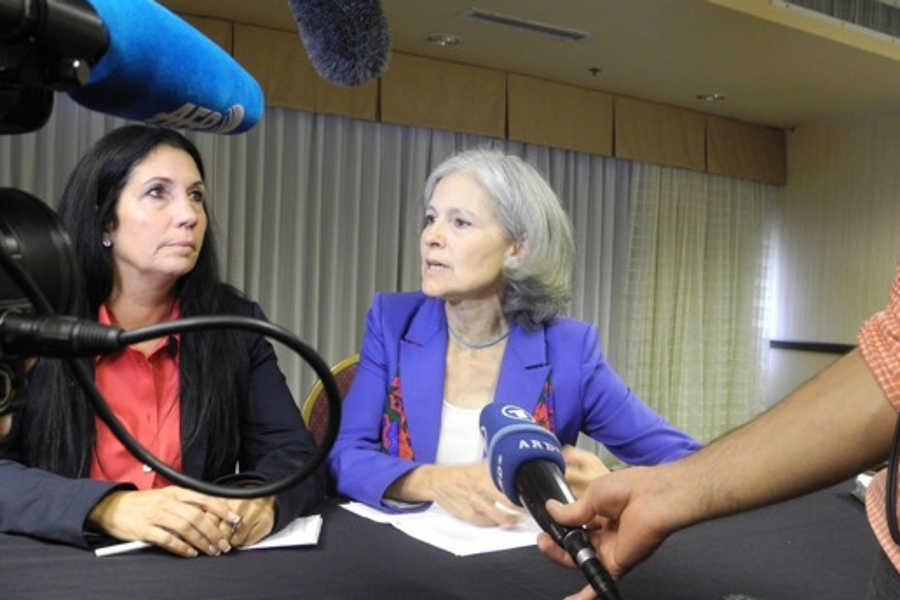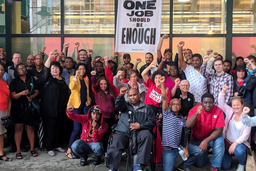
BALTIMORE — If the Green Party presidential nominating convention that ended here on July 15 is any indication, movement toward political cooperation between organized labor and the environmental movement is still weak, with no sign of gathering strength.
The convention — which nominated physician Jill Stein as the party’s presidential candidate —did not feature official participation by any labor union, or any labor-affiliated organization. No elected labor leaders spoke to the delegates during the two-day official proceedings, and party activists aren’t expecting any help from organized labor in the campaign this fall.
Not even the BlueGreen Alliance bothered to send a representative. Formed in 2006 by unions and major environmental lobbying organizations specifically to foster cooperation between the two groups, the BlueGreen Alliance appears badly wounded by the political fight over the proposed Keystone XL pipeline. That controversy resulted in the highly public withdrawal of Laborers International Union from the Alliance early this year, and feelings are still raw.
None of this is very surprising to Green Party veteran Howard Hawkins, a Teamsters member from Syracuse, N.Y. “The majority of Greens are working class people, and many of them are in unions,” he said. But labor leaders are distrustful of the green movement, and cooperation only takes place in a handful of isolated areas, and at the lowest levels of the union hierarchy, Hawkins said.
Hawkins had a close-up view of this dynamic two years ago, when he was the Green Party candidate for governor of New York. Hawkins said he opposed Democratic Party candidate Andrew Cuomo’s plans for a state government austerity program that would harm public sector workers, but he found little support from unions. He could gain no backing even from New York’s Working Families Party, which is heavily supported by the Service Employees International Union (SEIU) and Communications Workers of America (CWA), he said. The Working Families Party ultimately endorsed Cuomo in that race. “They often support corporate Democrats, and even Republicans,” Hawkins commented.
Labor’s general disinterest in the Green Party notwithstanding, Hawkins said he would help lead an effort to secure an endorsement for Stein from the United Electrical, Radio and Machine Workers of America (UE), which is affiliated with neither with the AFL-CIO nor the moribund Change to Win federation. “I don’t know if we’ll get the endorsement of the UE, but we’ll get a fair hearing from them,” he said.
Stein’s acceptance address at the convention reflected the distance between most of organized labor and the Green Party, containing no mention of unions individually, despite a heavy emphasis on green jobs as the logical means to both relieve unemployment and advance environmental goals.
Green jobs are rightfully the centerpiece of the party’s platform, Hawkins added, and ought to be the basis of much greater cooperation with organized labor. For Hawkins, the Obama administration’s green jobs initiatives are a step forward, but far too modest to have the necessary effect. He criticized the BlueGreen Alliance for its failure to embrace a more comprehensive green jobs program that could lead the country toward a carbon-free economy. “The BlueGreen Alliance won’t even come out against nuclear power or so-called clean coal,” so there are still enormous policy differences to be overcome, Hawkins noted.
Hawkins concluded that he saw few signs that the tension between organized labor and the green movement would change anytime soon. Small-scale alliances will continue to be forged at the local level, he predicted, particularly if the Green Party is successful in electing more officials at the municipal level. But any larger change seems far off.
Hawkins’ view seemed to be confirmed in an indirect way by Erin Bzymek, press secretary for the Washington, D.C.-based BlueGreen Alliance. Asked for comment by Working In These Times on the Green Party convention, Bzymek said the Alliance had no comment. Asked for some assessment of the broader state of the labor-green relations, Byzymek again said she could make no comment.







